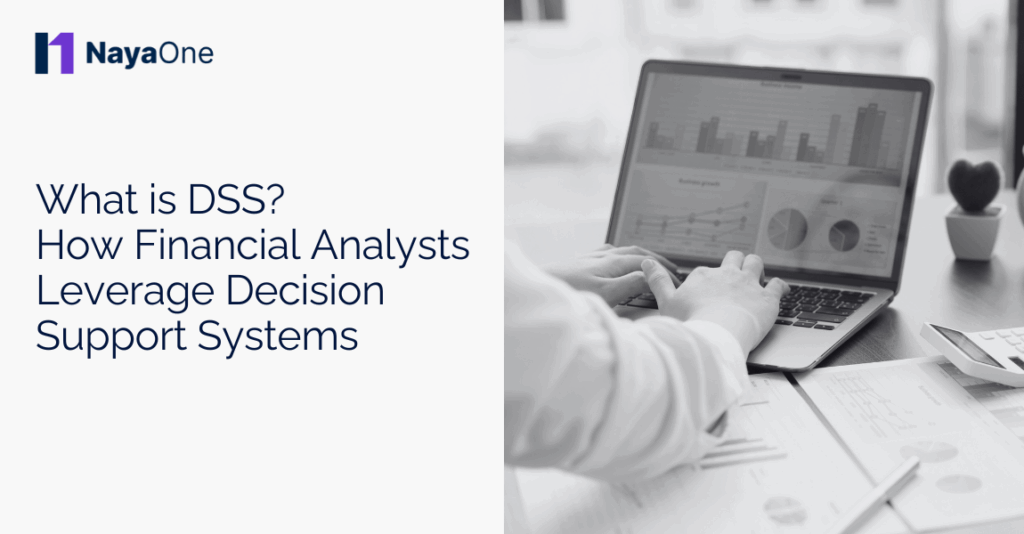If you've ever wondered how financial analysts seem to predict market trends, spot risks, or make complex investment decisions with ease, the secret often lies in their tools. One of the most powerful tools in their arsenal is a Decision Support System (DSS). But what is DSS?
At its core, a DSS is a computer-based system that helps analysts process large volumes of data, run financial models, and make informed decisions without relying solely on intuition. Think of it as a smart assistant that crunches numbers, explores scenarios, and highlights insights you might have missed. For anyone working in finance, understanding what DSS is can be a game-changer.
A study published in the International Journal of Decision Support Systems found that the implementation of Decision Support Systems (DSS) in the finance sector led to a 50% improvement in decision speed and a 35% reduction in errors.
Let’s take a closer look at how this technology is shaping the world of financial analysis.
What is a Decision Support System (DSS) in Finance?
So, what is DSS when it comes to finance? A Decision Support System is more than just a fancy spreadsheet or a calculator. It is a software system designed to collect, organise, and analyse data in ways that support decision-making. In financial contexts, this can include historical market data, company performance metrics, risk indicators, and even predictive models.
The main components of a DSS include the data it uses, the models that process the data, and the user interface that allows analysts to interact with it. Imagine a financial analyst wanting to assess whether to invest in a particular stock. The DSS can pull together recent financial reports, market trends, and economic indicators, then run simulations to show potential outcomes. This helps the analyst see the bigger picture and make a more informed choice.
A key part of DSS is flexibility. Analysts can adjust parameters, test scenarios, and compare results quickly. Unlike traditional methods that require manual calculations, a DSS streamlines the process and allows for more thorough analysis. In short, it helps financial professionals turn complex data into actionable insights.
How do financial analysts use DSS for investment decisions?
One of the areas where DSS shines is in investment decision-making. Financial analysts face the constant challenge of picking investments that offer growth without taking on unnecessary risk. This is where a Decision Support System becomes an invaluable ally.
Analysts can use DSS to evaluate stocks, bonds, mutual funds, or entire portfolios. By inputting various assumptions about interest rates, company performance, or market conditions, the DSS can model multiple scenarios and project potential outcomes. This is particularly useful for portfolio management, where balancing risk and return is crucial.
Another way DSS helps is by identifying patterns in historical data. For example, a system might reveal that a certain sector tends to perform well when specific economic indicators align. Analysts can use this information to inform their investment strategy. DSS can also automate alerts, highlighting potential investment opportunities or risks based on preset criteria.
By combining analytical power with real-time data, financial analysts can make decisions with more confidence. They no longer have to rely solely on experience or intuition. Instead, they have a tool that helps them test ideas, weigh options, and make smarter investment choices.
In fact, a recent survey highlighted that over 90% of investment managers are either using or planning to use AI, with 54% already integrating it into their strategies. This underscores the growing reliance on advanced decision support systems in the financial sector.
How can DSS improve risk management and compliance?
Risk management is another area where Decision Support Systems are invaluable. In finance, risks come in many forms: market volatility, credit exposure, regulatory changes, and even fraud. Keeping track of all these risks manually can be overwhelming.
A DSS can monitor financial data continuously and flag potential risks before they become major problems. For example, it might alert analysts to unusual transactions, shifts in market conditions, or deviations from expected cash flows. This allows teams to take proactive steps rather than reacting after the fact. Understanding what is DSS helps financial professionals use it effectively to manage these risks.
Compliance is also a major consideration in finance. Regulations can be complex and vary between regions. A DSS can store regulatory rules, track compliance metrics, and generate reports for audits. This reduces the chance of errors and ensures that the organisation stays on the right side of the law.
Additionally, DSS can perform scenario analysis to test how changes in regulations or market conditions could impact the business. By exploring multiple scenarios, financial teams can prepare for uncertainty and avoid costly surprises. In short, DSS strengthens both risk management and compliance, helping analysts make better, safer decisions.
What are the benefits and limitations of using DSS in finance?
There are many reasons why financial analysts rely on DSS, but it is important to understand both the benefits and limitations.
Benefits include:
- Faster decision-making: Analysts can process large datasets quickly, saving hours of manual work.
- Improved accuracy: Automated calculations reduce human error and provide reliable results.
- Scenario testing: Analysts can explore multiple outcomes and see the impact of different decisions.
- Better insight: DSS highlights patterns and trends that might not be obvious at first glance.
However, DSS is not perfect. Its effectiveness depends on the quality of the data fed into it. Poor or incomplete data can lead to misleading results. The systems can also be complex to set up and maintain, requiring specialised knowledge. Finally, a DSS cannot replace human judgement entirely. While it provides insights, analysts must interpret the results and consider factors that the system might not account for, such as market sentiment or geopolitical events.
Despite these limitations, the advantages of using DSS often outweigh the drawbacks, making it an essential tool for modern financial analysis.
How DSS is shaping the future of financial analysis
Decision Support Systems (DSS) have transformed the way financial analysts work. If you’ve ever wondered what is DSS, it’s a tool that turns mountains of data into clear insights, helps manage risk, and supports strategic investment decisions. Analysts who use DSS can make faster, more informed choices and respond to changing market conditions with confidence.
As technology continues to advance, DSS will become even more sophisticated, integrating real-time data feeds, predictive analytics, and advanced modelling tools. Platforms like NayaOne’s digital sandbox allow analysts to safely test strategies and models in a simulated environment, helping validate decisions before applying them in the real world.
In summary, understanding what is DSS and combining it with a digital sandbox approach transforms it from a simple tool into a strategic partner in analysis. Financial professionals can move from guesswork to data-driven decisions, improving accuracy, efficiency, and confidence in every choice they make. Leveraging its full potential can be the difference between good decisions and great ones.





